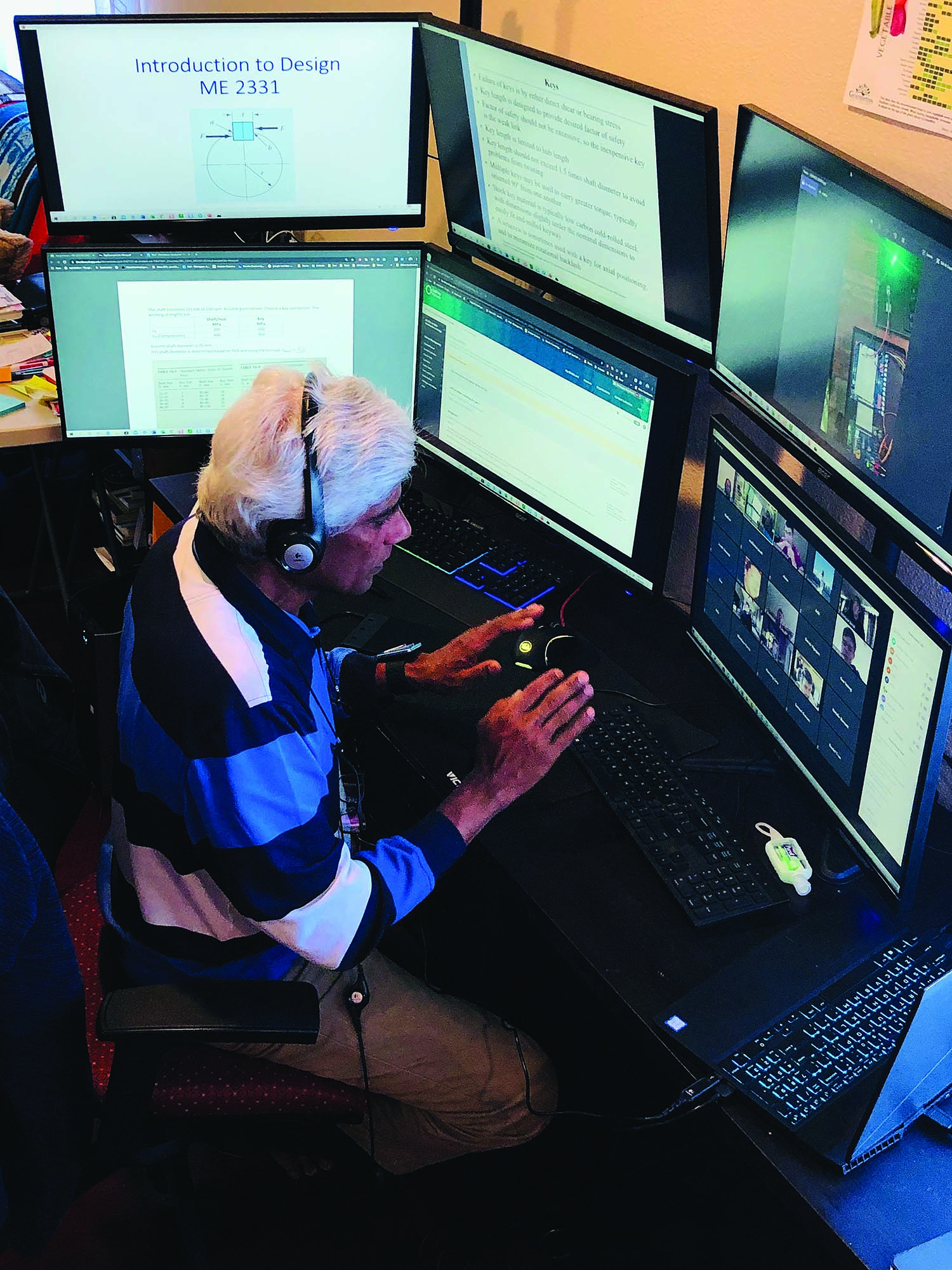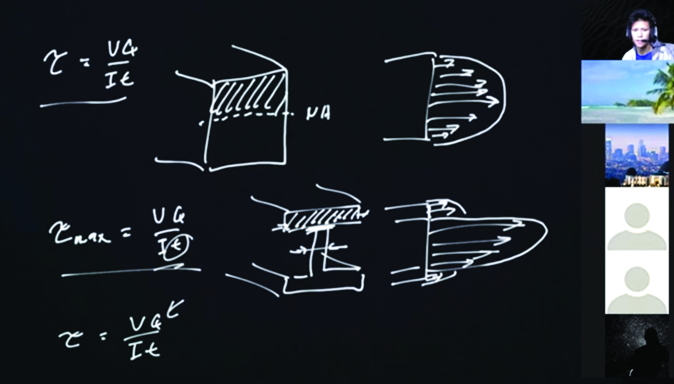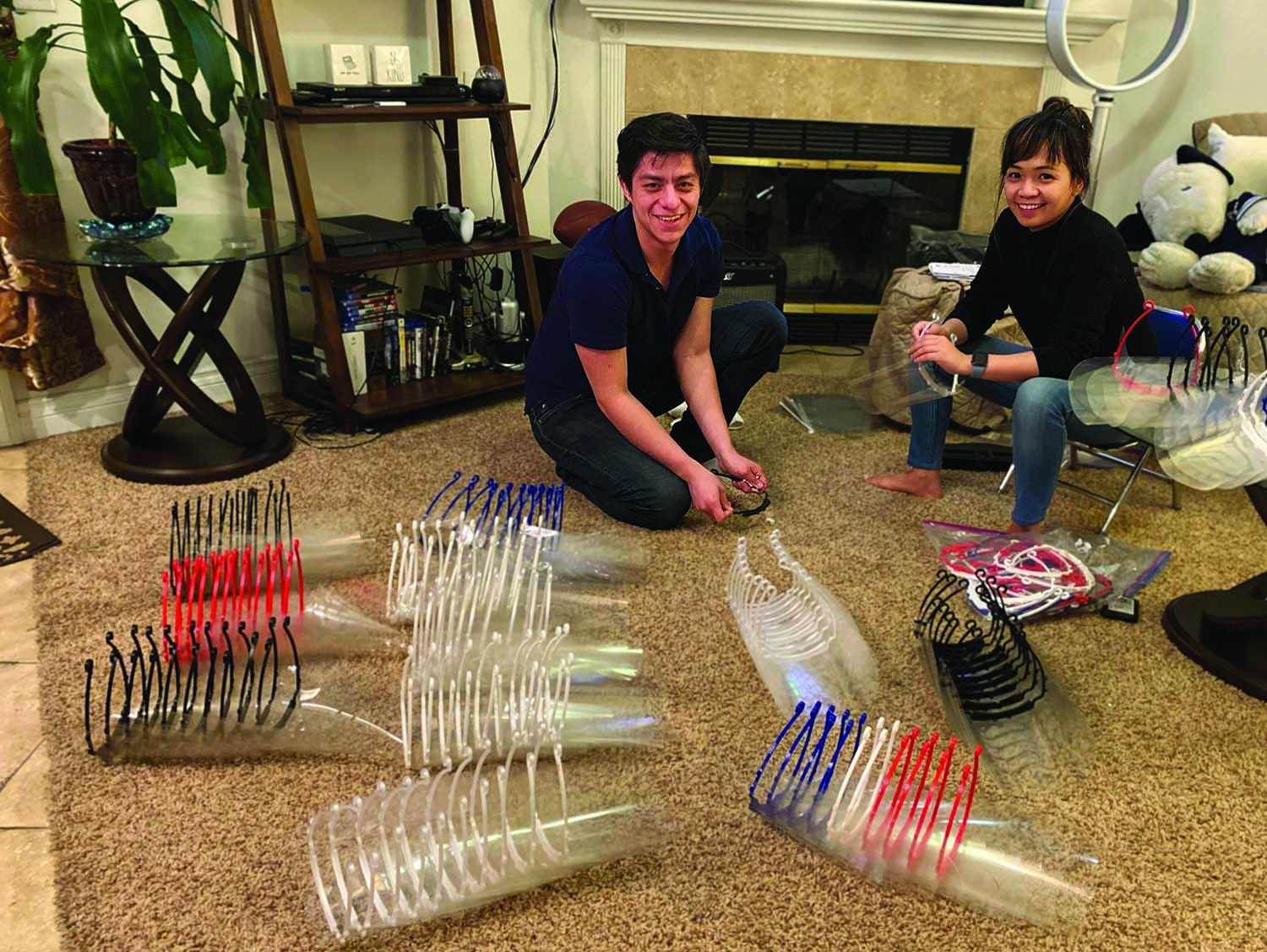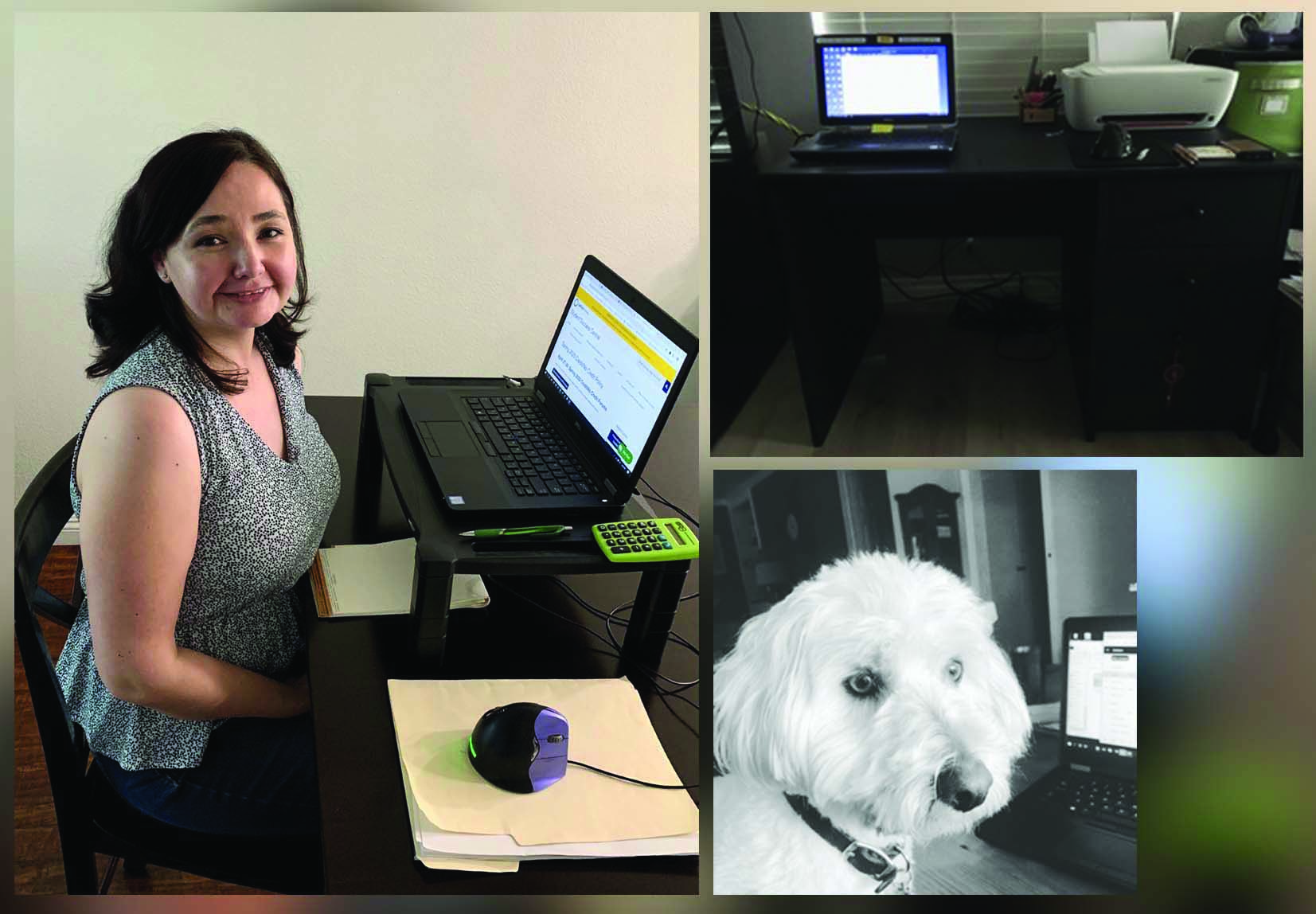A Year Like No Other
Overnight, Cal Poly Pomona’s population of over 30,000 was asked to go home, stay home and not come back until they were told they could.
In a whirlwind of evacuation, the shape of COVID-19—its transmissibility and lethality—was unknown. The worst was assumed in order to deploy the safest response. The campus went into total shutdown amid the spring 2020 semester, and the largest social experiment in remote working, learning, and living began.
And not by choice.
Months after the pandemic began, George Floyd was killed in an act of police injustice. If COVID-19 was dry brush, Floyd’s death was gasoline and a box of matches. The nation and the world priced in the risk of spreading the virus and chose to protest.
Social turmoil and a pandemic now run in parallel. This is the story of how the students, faculty, staff, and alumni that make up the College of Engineering navigated, and continue to navigate, a time of great uncertainty.
NOT JUST SURVIVING—ADAPTING, AND THRIVING
In late January, a cautious Cal Poly Pomona assessed that COVID-19 was not a risk to the campus. By March, caution became rapid action, accelerating to a remote and virtual environment that by any standard, was breathless in its speed. By the end of the month, our new virtual and remote reality began, and justifiably, doubts on how it would go.
“I didn’t like the idea of conducting a three-hour lab online, and went with low expectations,” says Dr. Mariappan Jawaharlal (Jawa), former mechanical engineering professor. “It turned out to be better than my wildest imagination.”
When Jawa logged on to teach his lab course, all 35 of his students were there waiting for him to begin.
“I love classroom interactions and I still prefer face-to-face meetings over online, but our students are resilient and willing to go the extra mile,” says Jawa.
 Our programs showed the same resilience. The college’s Maximizing Engineering Potential (MEP) program took its in-person, student-taught tutoring service virtual. MEP’s staff leapt across chasms of bureaucracy to have tutoring in time for the students who needed it most.
Our programs showed the same resilience. The college’s Maximizing Engineering Potential (MEP) program took its in-person, student-taught tutoring service virtual. MEP’s staff leapt across chasms of bureaucracy to have tutoring in time for the students who needed it most.
Overall, each tutoring session ranged anywhere between 10 to 30 unique users, and the program also offered supplemental instruction three times a week for specific bottleneck courses.
Aptly called Virtual Technology-Assisted Supplemental Instruction (V-TASI), the program provides free instruction for courses that students have historically struggled with. Funded by the Office of Student Success, V-TASI proved to be an invaluable service.
 “Multiple students mentioned to me that they had been having issues with a specific topic, and that V-TASI helped them really understand it,” says Katherine Nava, aerospace engineering student and V-TASI facilitator. “Without it, trying to learn from YouTube or their textbook was too difficult.”
“Multiple students mentioned to me that they had been having issues with a specific topic, and that V-TASI helped them really understand it,” says Katherine Nava, aerospace engineering student and V-TASI facilitator. “Without it, trying to learn from YouTube or their textbook was too difficult.”
As MEP looks ahead to the upcoming challenges in a largely virtual and remote fall 2020 semester, they press onward.
“As far as MEP goes, we’re going to go with it,” says Scott Chang, academic retention coordinator for MEP. “Can't do much about the situation, but we’re doing the same things we were doing before but in a virtual environment."
Photos above: Former mechanical engineering professor Dr. Mariappan Jawaharlal teaches virtually on his six-monitor setup; a V-TASI session for ME 2191 (Strength and Mechanics of Materials) hosted by Kevin Lee, engineering student and V-TASI facilitator.
“When CPP sees a problem, it gets together to solve it.” — Pauline Tasci ('19, Manufacturing Engineering)
THEY MADE FACESHIELDS—A LOT OF FACESHIELDS
Beyond the classroom, engineering students and faculty volunteered their time and resources to produce personal protective equipment (PPE) for frontline workers.
Among the regional efforts in Southern California is the SoCal Makers COVID-19 Response Team, a network of volunteers within the SoCal area meeting the demand for PPE. Pauline Tasci (’19, manufacturing engineering) and Alberto Smith, manufacturing engineering student, were two of many students and faculty volunteers from Cal Poly Pomona. After immediately joining the effort, their work in the production and distribution of PPE benefited California and beyond, including Africa.

“I’m always the type of person who tries to help when seeing a problem,” says Tasci. “I’m not a scientist who can make a vaccine, but I can help frontline workers get the materials they need.”
Smith, whose girlfriend and mother work as nurses, put his 3D printer to work to manufacture plastic face covers. After the raw product is produced, an extensive amount of work was done to ensure its usability. Smith rounded out the sharp corners and Tasci gave them an extensive quality check—she made sure nothing poked out, no filaments were astray, and sterilized them with rubbing alcohol. After three hours of quality control, she delivered them to Eric Gever, the response team’s lead, to get them ready and delivered to where they needed to go.
“I’m amazed how quickly Cal Poly Pomona students stepped up to the plate,” says Tasci. “When CPP sees a problem, it gets together to solve it.”
STAFF RELENTLESSLY HELP STUDENTS
On a typical workday, the Engineering Advising Center (EAC) saw an average of 30 emails a day from students needing guidance on moving forward in their engineering program. Then overnight, 30 became hundreds.
“I think a good word for it was overwhelming,” says Monica Kays, engineering advising coordinator.
In a virtual and remote environment, what would have been a tidy 10-minute, in-person advising session became a cycle of email replies between advisor and student. An email chain could persist throughout the day, or even the entire week. Compounding the challenge was the new work environment. Home offices may vary.
The Kays’ household is full with her husband, a school teacher who now teaches at home via Zoom; her 10-year-old daughter; and the family dog, who elects to yap whenever an Amazon delivery arrives at their doorstep.
“Bless her [Kays’ daughter] heart, but it’s not easy when she’s asking, ‘Mom, are you on a Zoom call? I need help with fractions’,” says Kays.
The EAC pushed on during these unprecedented challenges by relying on each other to stay focused on getting students through the semester.
“I feel lucky to be on the team that I'm in. We lean on each other for pretty much anything,” says Alexandra Retana, engineering advisor. “As a unit we’re continuing to be really successful with the students.”

Lita Patel, administrative support coordinator for the Department of Mechanical Engineering, had similar challenges.
“It was endless contact from students,” says Patel. “Hundreds of emails with students panicking.”
The most common student request was a need for permission numbers that allowed students to enroll for required classes at capacity. With the transition to remote and virtual learning occurring around the fall 2020 class registration period and Patel being the sole tracker and distributer of permission numbers for the department, hectic was the status quo.
A 21-year veteran in getting students what they need, Patel developed a system to track the distribution of permission numbers. She worked around her one-monitor limitation by turning her iPad into a second screen.
“Thank you so much for your help Lita. You’ve always been a lifesaver,” said one of the hundreds of students in need of her help.
“This was the single biggest moment in faculty development training ever.” — Dr. Paul Nissenson, Mechanical Engineering Associate Professor
FALL 2020 AND BEYOND
Summer was a time of preparation.
“This was the single biggest moment in faculty development training ever,” says Dr. Paul Nissenson, mechanical engineering associate professor. Nearly 1,300 faculty across the university took on training courses to optimize their classes for a virtual format. In the college, engineering faculty led workshops on how to grade, test and teach virtually. Particular to the College of Engineering, a fundamental challenge was translating its in-person lab courses online.
“How do you give students a good enough experience to be confident in saying, ‘Yes, I understand how to use this machine,’” says Nissenson. The solution is videos that show how the machines in the lab work to understand it in theory. The practice comes when the students receive preexisting lab data to complete their assignment. In other words, while the process is only shown, students are still required to understand it to interpret the output.
Fall and beyond will be filled with problems to solve, and faculty are ready to get it right.
“Faculty are really eager to figure out what will work for their students,” says Nissenson. “Even faculty nearing retirement participated in summer programs to deliver as good of an education as they can. In the long-term, we will be better off with this experience.”